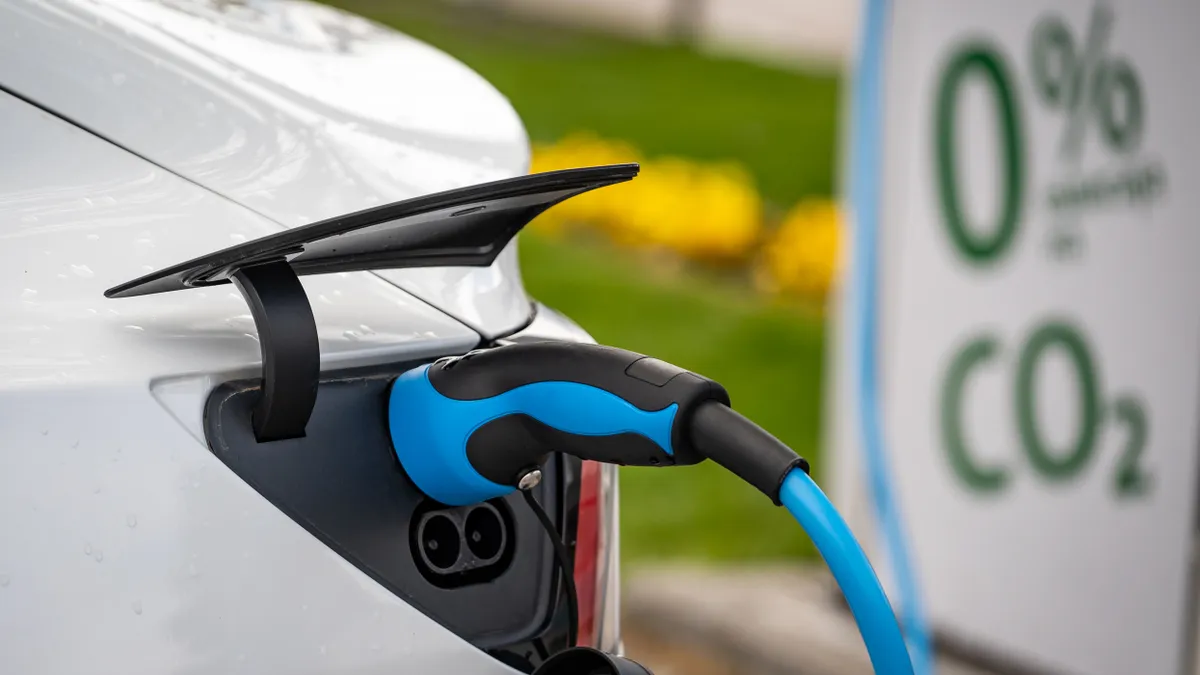In late 2021, after apartment owners and operators started inundating Park City, Utah-based RET Ventures about EV charging stations, the multifamily-focused technology investment firm created a working group and launched a comprehensive evaluation of the technology. It found a lot of dissatisfaction.
“The chargers are offline a lot. They’re broken a lot. Residents start calling the leasing office, and the people in the leasing office aren’t EV charging experts and don’t know how to troubleshoot,” RET vice president Jameson Hartman said. “It just creates this headache from an operational standpoint and general dissatisfaction for the residents.”

Whether they like it or not, multifamily owners and operators are being forced to start wading through EV charging options as demand intensifies. EV sales have soared, increasing by 67% from 2021 to 2022, according to Kelley Blue Book, and the U.S. Department of Energy has adopted an International Code Council provision requiring apartment communities to provide EV charging infrastructure for up to for 20% of lots with 25 or more parking spaces.
“Electric vehicles are expected to account for nearly 30% of sales by 2030,” said Ted Weldon, executive general manager of development for the Chicago office of global real estate developer Lendlease. “It is inevitable that the number of renters looking for a place to charge their electric vehicle at home will increase.”
Renters are willing to pay a premium for the capability. In a 2022 National Multifamily Housing Council survey, 27% of renters said they were interested in EV charging stations, and respondents said they would pay $28.12 more per month for them.
“Very soon, it’s going to move from being an amenity to table stakes,” said Jill Brosig, managing director and chief impact officer for investment management firm Harrison Street, which installed nearly 300 Xeal charging stations at senior and student housing properties in California, Massachusetts, Texas and Virginia this year.
Costs and incentives
Before Harrison Street invested in chargers, Brosig’s team surveyed their properties about their EV charging needs and desires — a step she said is crucial.

Multifamily properties can install two types of chargers. Level 1 (L1) are the most affordable at $300 to $1,500 per station, but they can only charge about 5 miles of range per hour. Level 2 (L2), the most common in apartment buildings, can cost up to $7,500 and are able to charge multiple vehicles faster — about 16 to 25 miles of range per hour — and can also network and balance electrical loads.
The cost of installing chargers can be mitigated in some states, where governments and utilities offer rebates and incentives, but wading through the options and filling out the applications can be a heavy lift. California utilities have provided at least $240 million for EV charging infrastructure at multifamily properties since 2016, and Colorado provides rebates of up to 80% of charging station costs for multifamily properties.
The Inflation Reduction Act, passed by Congress earlier this year, reinstated a tax credit of up to 30% of the cost.
“Incentives can get very complicated,” Brosig said, which is why she recommends partnering with a vendor that “is able to basically be your eyes on the ground in terms of what’s happening in various municipalities.”
At Chicago-based RMK Management Corp. which is installing L2 charging stations at most of its properties in Illinois, Indiana, Wisconsin and Minnesota, executive vice president Diana Pittro said costs range between $5,000 to $15,000 per charger, depending on where they’re located and the amount of concrete or wiring that has to be done on sites that require retrofitting. (Installing chargers on existing properties can cost three to five times more than including EV ports in new builds.)
Managing risk
Chicago-based real estate management firm The Habitat Co., which has been installing EV chargers at its multifamily properties for 10 years, looks for at least a three-year payback for the cost of the chargers, said senior regional manager Wendy Deetjen.
“We see discounts by buying in volume, and we try to take advantage of that,” she added.
Following its evaluation, RET Ventures determined that L1 charging with L2 support is the best path to widespread adoption. It recently invested in Plugzio, a hardware-agnostic, cloud-based charger management system that integrates with established Level 2 providers. The $300 device, which plugs into traditional outlets, charges 10 miles of range per hour — about halfway between L1 and L2 — and can be managed through a central dashboard.
“There’s lower capital at risk,” RET Venture’s Hartman said. “So, in five years, if the industry turns over and battery swap becomes the thing — great. Even if you’ve deployed Plugzio across your portfolio, you spent a fourth of the capex that other people did, so you’re not nearly as upset.”
Operations and marketing
Before committing to any type of charger, experts recommend contacting the local electric utility to determine whether service is adequate and inquire about special rates or rebates.

Determining how many chargers to install is highly dependent on property type and location. Chris Vargas, senior vice president of sales and marketing for Culver City, Calif.-based Chargie, which specializes in charging stations for multifamily properties, said he’s working with a luxury 300-unit property in Orange County that is installing 300 chargers — but each building is unique in its needs.
“If I had a crystal ball and were to look into the future, probably 80% of parking spots at multifamily properties will have Level 2 charging access,” Vargas said.
Operators must also develop policies and procedures to manage charging, determine whether and how residents will pay for it and make plans to promote the service to residents and potential residents.
“The marketing piece is a big piece,” Brosig said. “How are you going to use this to your advantage? Are you talking about it on your website, in your marketing materials? Is your property manager emphasizing it? The last thing you want to do is install this technology and not tell anybody.”




















